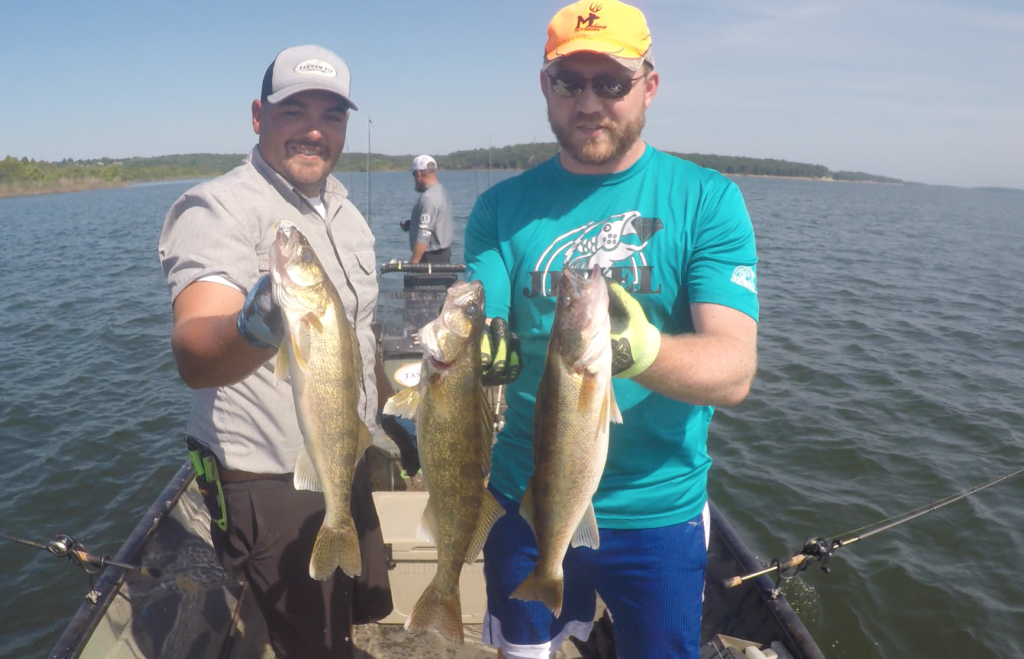The third installment of the Stockton Fishing Series is here with the help of Kris Nelson at Tandem Fly Outfitters! In this edition, you will learn about a third method to catch walleyes not only on Stockton Lake, but anywhere across Missouri. So read on to learn more about bottom bouncing walleyes!
In our last two stories, Nelson shared with me the fishing techniques for the walleye spawn and early to mid-summer patterns. Catching walleyes on a jig and crawler can still be done late in the summer. However, there’s another tried and true method that usually becomes a lot more effective: bottom bouncing.
While very common in northern states, bottom bouncing is still a foreign concept to many across Missouri and Kansas. So, what is it? Well, it’s the key to catching a lot more walleyes this time of year during the late summer!

A bottom bouncer is essentially a weight that looks like an upside-down letter “L”. You attach your main line, usually 50-65 pound braid, to the bottom bouncer. On the arm, you’ll run a leader line with your bait, usually a nightcrawler on a special “Tru-turn” hook. Different versions of the hook are available from multiple brands.
Many northerners only use a 2-3 foot leader line, but Nelson likes to run a longer leader line ranging from 5-6 feet.
“Either 17-pound mono or fluoro works fine,” Nelson said. “I just like a longer leader to keep it further away from the noise of the bottom bouncer as it drags along the bottom.”
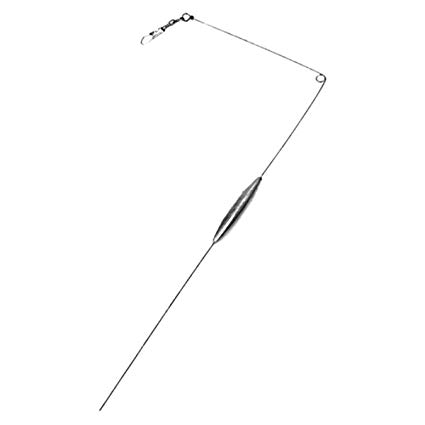
Bottom bouncers come in several sizes and many folks recommend 1 oz for every 10 feet of water that you’re fishing. Nelson goes with a standard 2 oz for the vast majority of his fishing in Missouri.
So when do you start looking for the bottom bouncer technique to be getting more effective?
“When you start seeing 78-80 degree water temps, it’s time to tie on the bottom bouncers,” Nelson said. “You’ll use this method when walleyes are moving in large numbers to the flats, which is usually around mid-to-late July.”
The flats are a great place for walleye to be because the whites often school up the shad in these areas, stunning and wounding many of them. That makes for easy pickings as the walleye scoop up the falling bait fish. Pea gravel flats can be very good places to target not only because bait fish get pushed there, but because you don’t get snagged as often on the bottom.
When it comes to the actual fishing, there are a couple of tips you’ll want to consider as well. Like we talked about in the last story, start shallow and work your way deeper. On my recent trip with Kris, we were catching our walleye in 11-14 feet of water starting out. As the sun rose, we worked our way out into that 20-25 feet range.
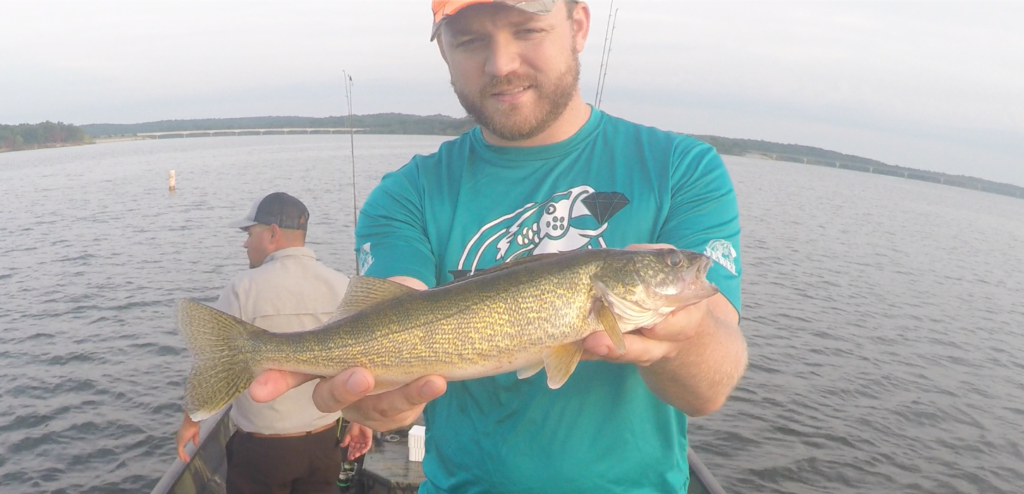
The boat needs to stay somewhere between 0.5 to 1.3 mph. We did most of our bottom bouncing at 0.9 mph. Slow it down if the fish seem to be more lethargic. Like all things fishing, it’s trial and error and a lot of experimenting.
When researching bottom bouncers online, you’ll notice all kinds of designs, including “double harness leader rigs” which include two small hooks where the worm is threaded on both. Nelson recommended avoiding that. Keep it simple when bottom bouncing walleyes!
“I only use a single hook with a full nightcrawler,” Nelson stated. “You get more scent and action that way, and you can always move to half a nightcrawler once you pinpoint the fish.”
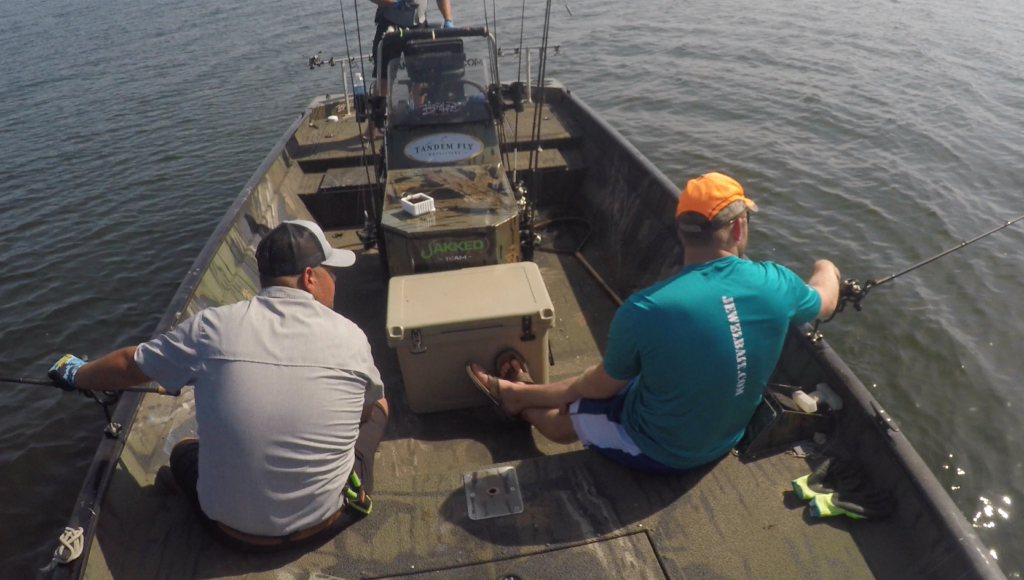
Other tips and tricks:
- Look for feeding windows
- There are normally about two major feeding windows each day
- If you start catching more catfish and drum, you’re probably at the end of the walleye bite
- If fish aren’t committing to your bait, push the release on your reel and give them some line
- That allows the fish some time to fully eat the bait
- Keep your hand on the reel with line in hand
- That helps you feel the bite sooner
- White bass will help you find the walleye
- Walleye eat left over scraps from white bass feeding frenzies
- Find the white bass and walleyes will be close by
- Cloudy and choppy water will keep fish active longer
- Gorilla Grip gloves are helpful with hanging onto the fish
- Helps you avoid any cuts from a walleye’s gill plates
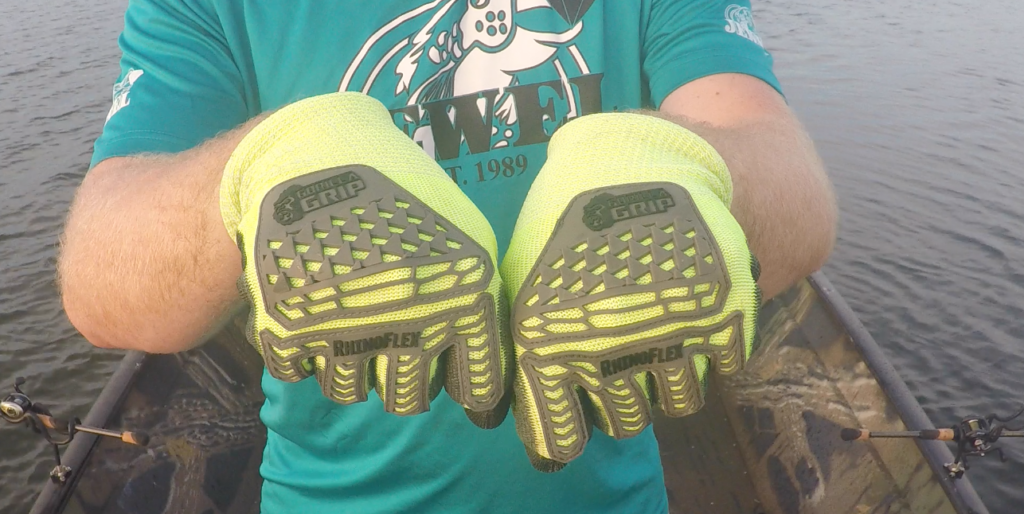
Quick Summary
Like we’ve discussed in the past stories, the key is getting out there and sticking with it. It may take a couple of trips and some fine tuning, but if you stay persistent you will start to figure it out.
If you want to speed up the process, I recommend reaching out to book a trip with Kris Nelson of Tandem Fly Outfitters. I’ve fished with them numerous times and have personally seen the great lengths he and his team will go to show you a good time and put you on the fish. He is an open book and loves helping people learn how to become better anglers.
Give Kris a call at 417.839.2762 or visit them at their website tandemflyoutfitters.com.
Be sure to check out part 1 and 2 before you go!

